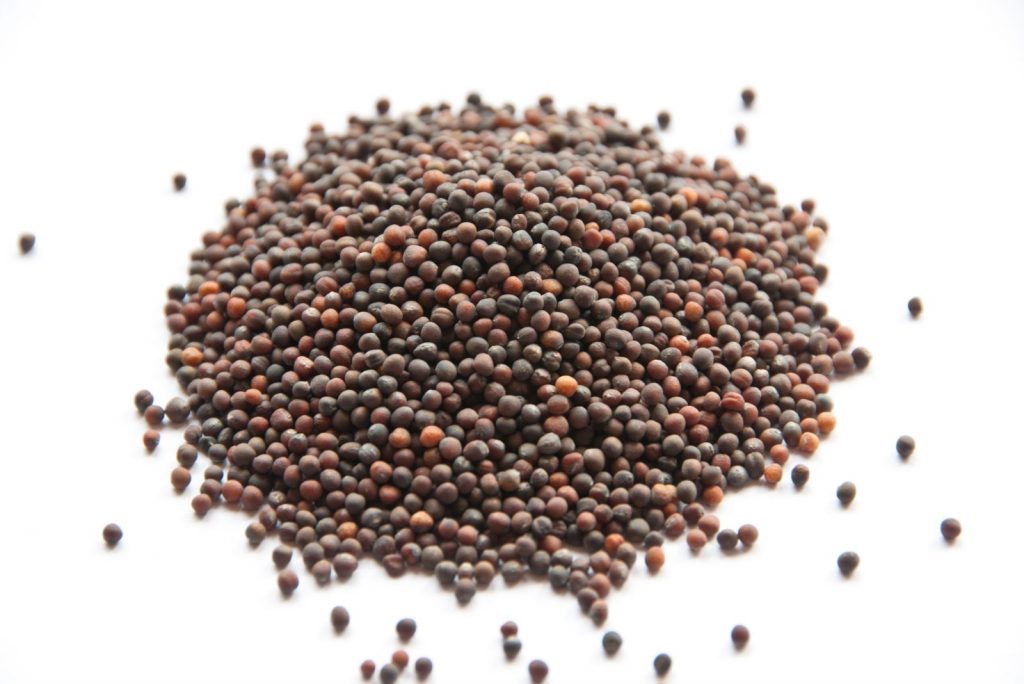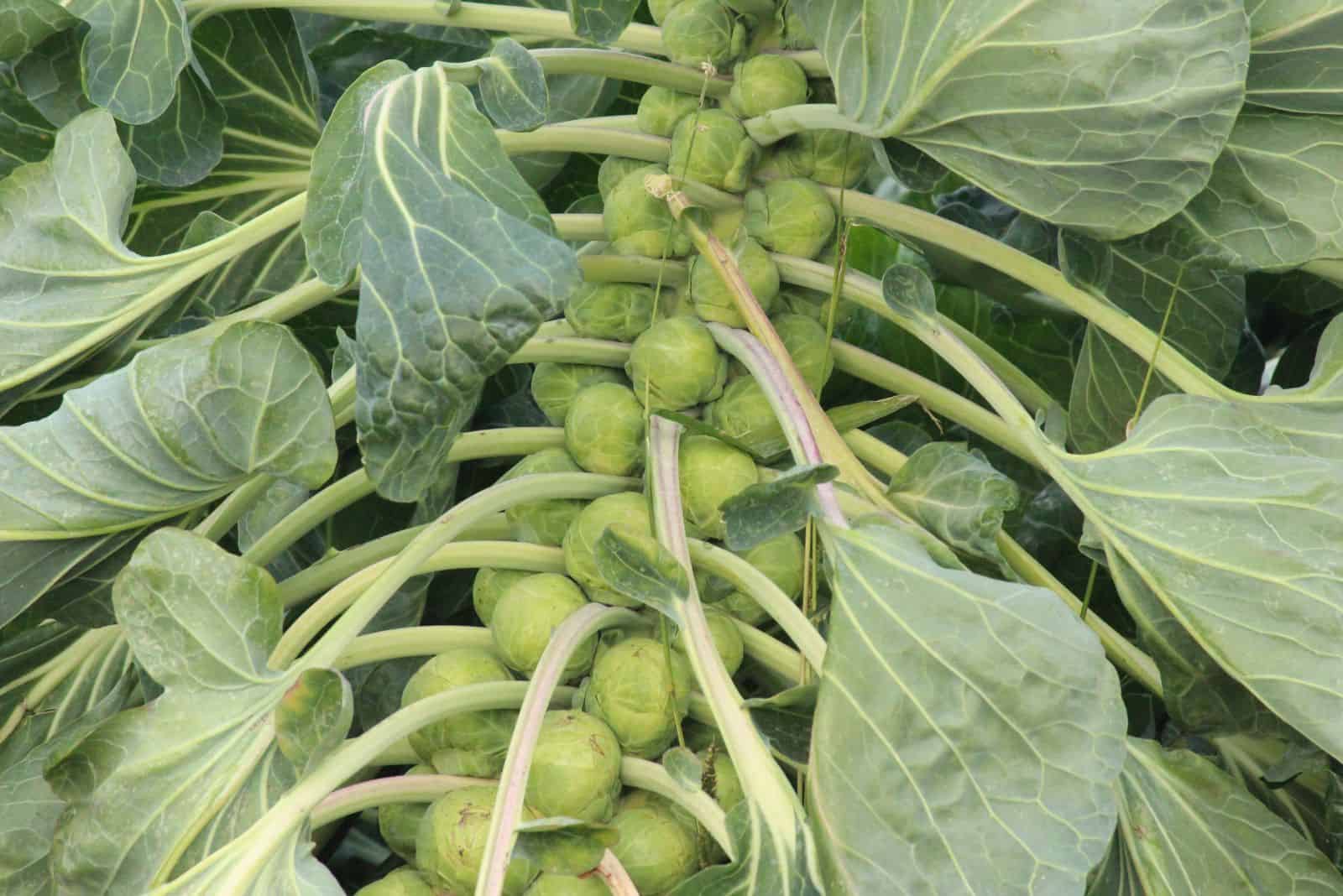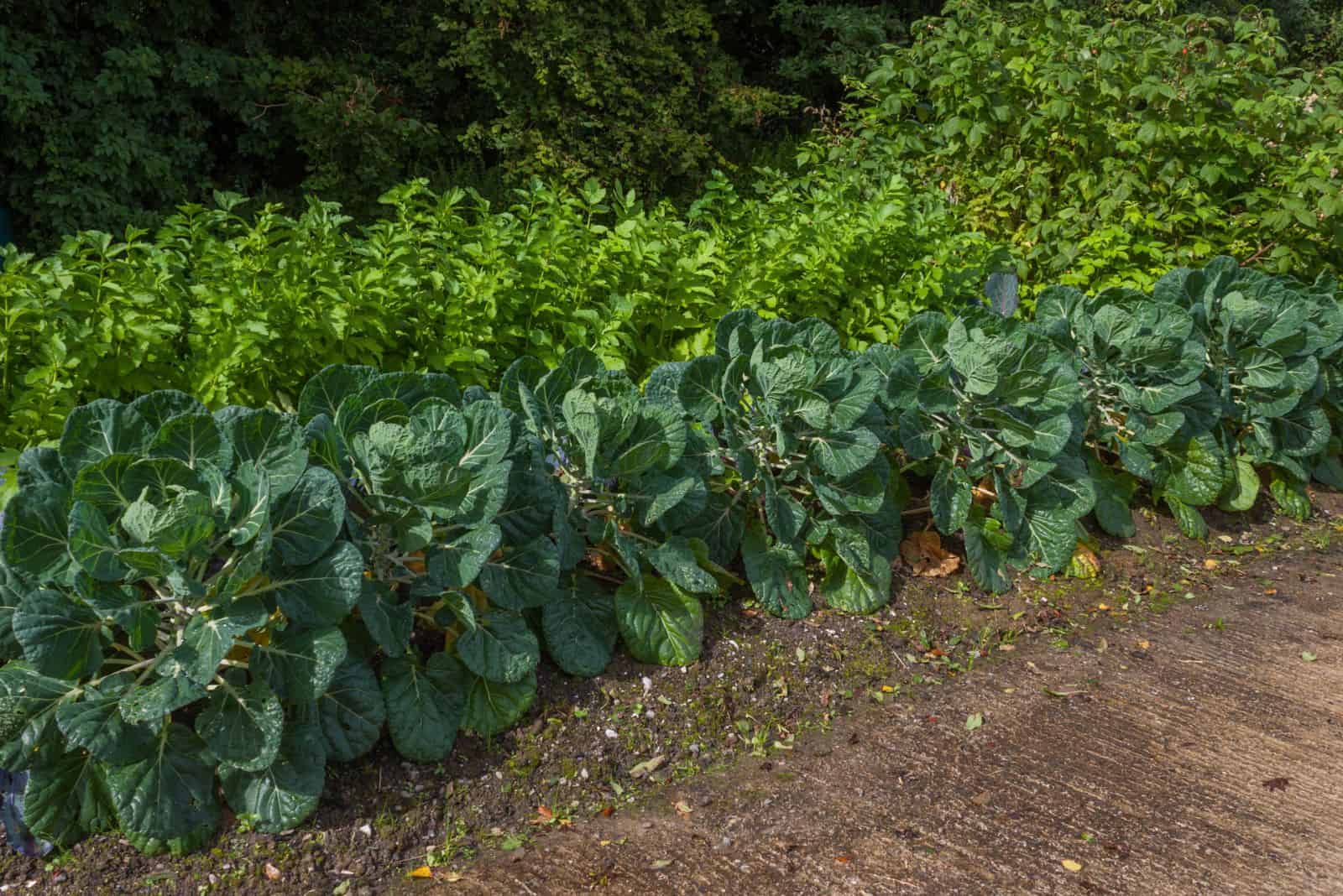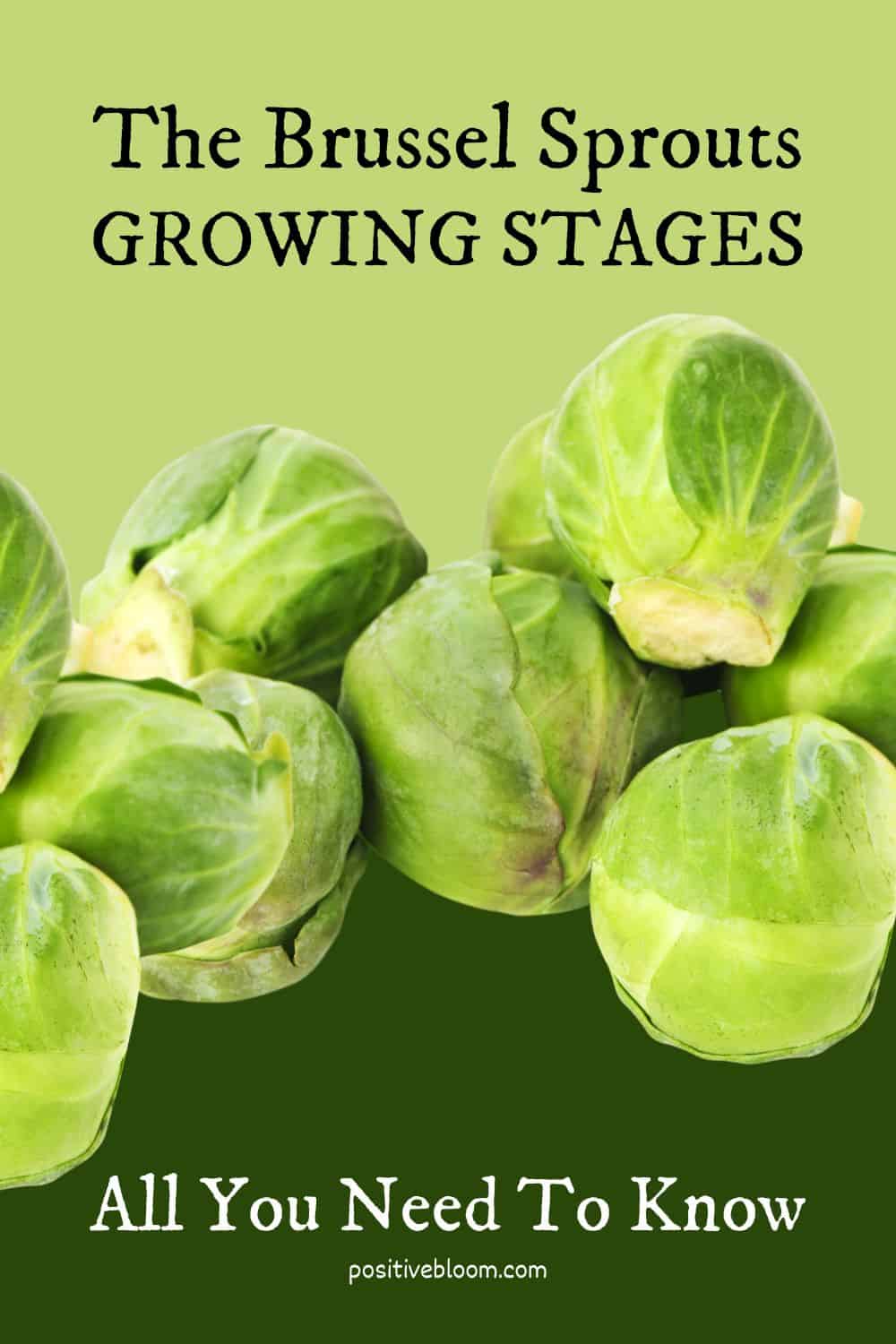When it comes to the cabbage family, many people often confuse vegetables within the group. Brussels sprouts are delicious vegetables that shouldn’t be mistaken for any other because their shape and taste are truly unique.
These veggies are easy to maintain. Still, some things may go wrong if you don’t ensure the right conditions. I’ll show you all the Brussels sprouts growing stages and what to expect from each of them.
Let’s learn the stages and some care tips!
Brussel Sprouts Growing Stages
Brassica oleracea var. Gemmifera is a member of the cabbage family and is often referred to as miniature cabbage.
They are pretty slow-growing, but if you know how to grow Brussels sprouts, you can speed things up and promote growth at each stage.
The Brussels sprouts growing stages include seed starting, the seedling stage, sprout formation, and the harvesting stage.
Let’s get into details!
Growing Stage 1: Brussels Sprouts Seeds
Just like all other vegetables, Brussels sprouts begin their growth from seeds. This is a tricky part of Brussels sprouts growth; if you make a single mistake, you can forget about a good harvest.
The most important thing for seed germination is planting time. These are cool-season veggies, and will perform best if planted in early spring (or mid-spring in colder climates).
You’ll need to plant Brussels sprouts about four months before the first fall frost date.
If you don’t live in an area with particularly cool weather, you can plant your Brussels sprouts in mid or late-summer.
The next thing to learn is how to plant Brussels sprouts. These cool-weather crops do best in well-drained soil as they are prone to fungal diseases.
The second thing is soil fertility; you need to ensure rich soil. I recommend placing a layer of mulch to ensure there’s enough organic matter. When planting the seeds, pay attention to spacing – 3 inches should suffice.
Your Brussels sprouts need full sun. When selecting a plant site, find a spot where your Brussels sprouts can receive about 6 hours of sunlight daily. Partial shade may affect the growth rate. These veggies already have a long growing season, so I recommend avoiding shady areas.
Finally, pay attention to the temperature; Brussel sprout seeds need a temperature range from 45 to 85 degrees Fahrenheit.
Growing Stage 2: Brussel Sprout Seedlings
The second stage of Brussel sprout plant growth is the seedling stage.
The essential thing during this stage is thinning your Brussels sprouts when they reach about 4 to 5 inches in height.
You’ll need to remove the seedlings so that the space between each stalk is 18 to 24 inches. Aim to leave only healthy, young plants. I recommend adding mulch around the seedlings to ensure nutrients and moisture, and prevent weeds.
Your Brussels sprouts will start to produce little top leaves that resemble small cabbage. Once the seedlings reach about 12 inches, I recommend feeding them with fish emulsion.
Growing Stage 3: Sprout Formation
You’ll need to wait for about 50 days for sprout formation. They’ll develop at the leaf axil, which is the part where leaves connect to the main stalk.
The earliest sprouts will appear around the base of the plant, moving up the trunk as they develop.
You can promote further growth by cutting off the top of the plant once the sprouts reach about 12 inches.
Why is this important? The top parts will use the energy your Brussels sprouts need for further development.
Sprouts will also grow better if you cut off their lower leaves. You can start harvesting Brussels sprouts when they are about half an inch in diameter or wait until they’re golf ball-sized. I recommend the latter so you get tastier crops.
Growing Stage 4: Harvesting Brussel Sprout Plants
Now comes the best part of Brussels sprouts growing – the harvest! The time needed for Brussels sprouts to mature mainly depends on the variety. Most Brussels sprouts varieties take 90 to 90 days from planting to maturation.
You can harvest your Brussels sprouts when they’re 1-2 inches in diameter, but don’t wait too long as they can become bitter.
The leaves will turn yellow, and that’s a sure sign your Brussels sprouts are ready for harvest. Start harvesting your Brussels sprouts from the bottom of the stalk. You can pull them or use pruners or similar cutting tools.
Remember that light frost improves the flavor of Brussels sprouts, so don’t rush with the harvest. You may also notice that the first sprouts aren’t as tasty as the last ones, but that’s completely normal.
Short Growing Guide
These veggies need more time to mature, but if you pay attention to the conditions, Brussels sprouts will be on your table sooner than you expected.
Here are some tips for speeding up the growth stages of Brussels sprouts:
• Plant your Brussels sprouts about 4 months before the first frost. If planting seeds indoors, ensure the pot has drainage holes, well-draining and rich soil, and always keep the soil moist. Your Brussels sprouts seeds should germinate in about three weeks, at which point they are ready for transplanting.
• Brussels sprouts don’t like hot weather; if you live in such a climate, go with varieties like Jade Cross as it can withstand slightly higher temperatures.
• Plant your Brussels sprouts where they can get a lot of full sunlight; these veggies thrive in raised garden beds.
• If you decide on growing in pots, garlic and Brussels sprouts are veggies that grow well in containers.
• Make sure to use row covers to protect your Brussels sprouts from pests. The most common pests that affect these veggies are aphids, cabbage worms, and cabbage loopers.
FAQs
Do Brussels sprouts come back every year?>
Brassica oleracea var. Gemmifera doesn’t come back every year, but it’s considered a biennial plant. Therefore, you can get fresh Brussels sprouts two years in a row, but only if you live in climates where temperatures don’t drop below 15 degrees Fahrenheit.
What is the best way to store Brussels sprouts?
If you want to eat fresh Brussels sprouts, remove the outer leaves and all diseased or damaged leaves before storing them in the refrigerator. Additionally, make sure they are entirely dry before storing; they may stay fresh for a week in the fridge, but if they have moisture they could rot.
If you want to freeze Brussels sprouts, you’ll need to blanch or roast them. In this way, your Brussels sprouts may last for about 6 months in the freezer without losing their flavor.
Wrapping Up
Brussels sprouts taste great, and luckily you don’t need to be a master gardener to get them to thrive.
Of course, these veggies require proper care to thrive, but they aren’t too fussy. You’ve seen all Brussels sprouts growing stages and what to expect from each stage.
Use our advice for growing these delicious veggies, and they’ll thrive in your vegetable garden.
Until next time!
Like this post? Share or pin it for later!





